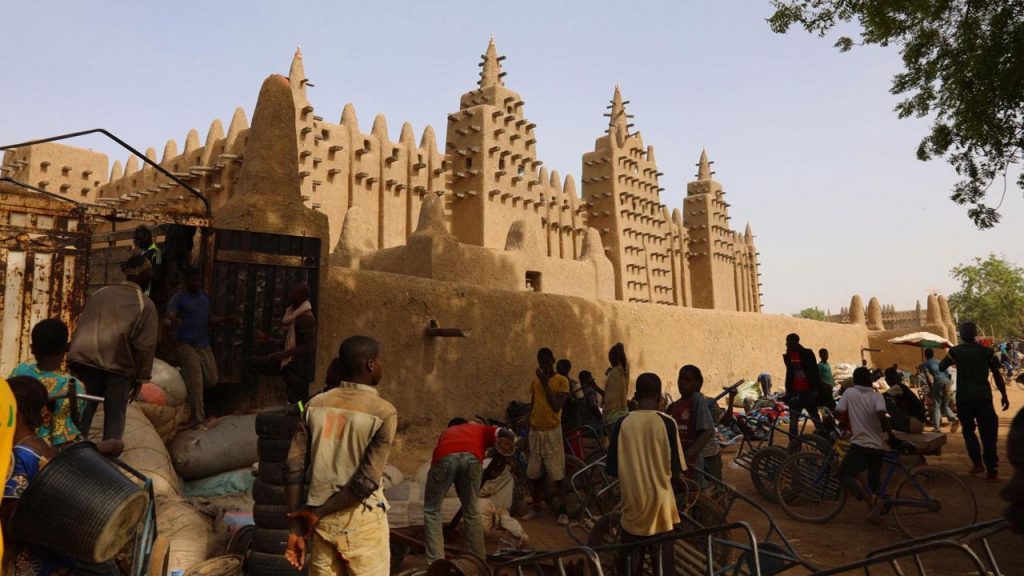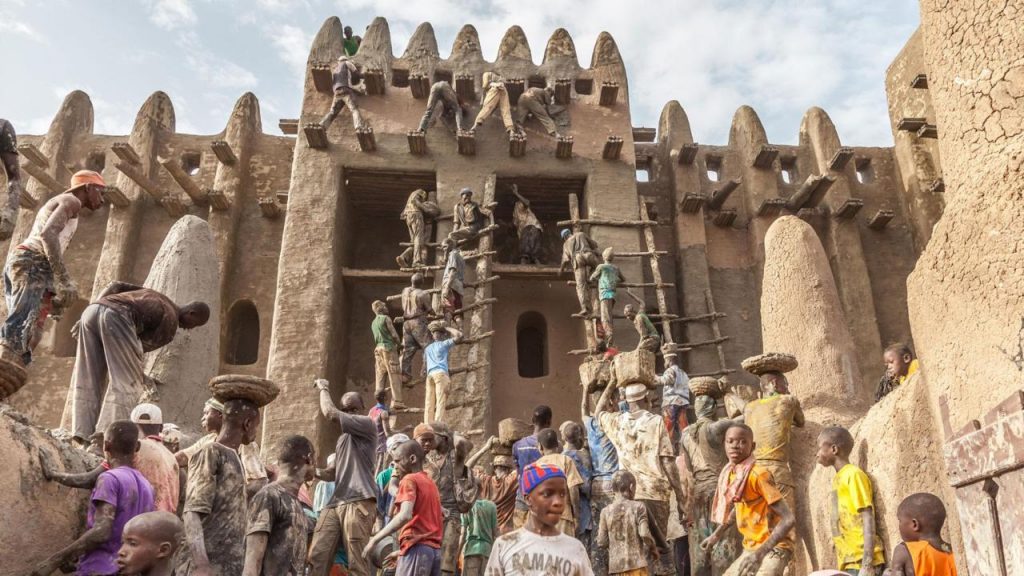Perched on a floodplain between the Niger and Bani rivers, Djenné has been inhabited since 250BC, making it one of the oldest towns in sub-Saharan Africa.
Photo Credit: (Paul de Roos)



Located in the arid hinterland of the scorching Sahara Desert in southern Mali, Africa, the Great Mosque of Djenné is a beguiling structure that instantly captures the imagination. Nearly 20m high and built on a 91m-long platform, it’s the world’s largest mud-brick building. The gargantuan mosque is the centrepiece of life in the Unesco-protected town of Djenné.
Perched on a floodplain between the Niger and Bani rivers, Djenné has been inhabited since 250BC, making it one of the oldest towns in sub-Saharan Africa. It flourished between the 13th and 18th Centuries as a key transport hub for goods such as salt and gold. Trade caravans also brought scholars and scribes, who introduced Islam to the region. It didn’t take long for Djenné to become a centre for Islamic scholarship, with the Great Mosque’s current edifice built in 1907 on the site of the community’s original mosque, which fell into disrepair during the 19th Century.
The Great Mosque has three distinctive minarets, with hundreds of sticks of rodier palm, known as ‘toron’, jutting out from the structure’s walls. The Great Mosque remains cool even during the hottest days. A lattice of 90 internal wooden columns supports the roof and the walls, which provide insulation from the sun’s heat. The roof, meanwhile, has several openings that allow a flow of fresh air in the dry season, but can be closed with terracotta lids during the rainy season. The mosque’s prayer hall canfit as many as 3,000 people.
An Epic Annual Rebuild
The walls of Djenné’s Great Mosque are reconstructed with mud each April in an epic one-day event called the Crépissage (Plastering). The structure requires annual reinforcement “ as do the town’s traditional adobe homes “ before Mali’s brief-yet-brutal rainy season, which mostly occurs in July and August, when almost the entire average 1,000mm annual rainfall will descend. This immense undertaking ensures that the mosque will survive the rainy season, despite altering in shape ever so slightly each year.
The Waking Night
Not only is the Crépissage an important act of maintenance designed to protect the mosque’s walls from cracking and crumbling, but it’s also a festival that celebrates Djenné’s community, faith and heritage. The night before the rebuilding, the town hums with anticipation and villagers take part in a carnival of singing and dancing known as La Nuit de Veille, or The Waking Night. Djenné’s moonlit streets ring with chants and drum beats before a whistle at around 04:00 signals the beginning of the most important event on the calendar.
Once the Crépissage is underway, teams from each neighbourhood in Djenné race to re-plaster the mosque, albeit carefully and precisely. Under the supervision of a guild of 80 senior masons, a highly revered profession in Djenné, young men scramble up the building’s façade carrying wicker baskets dripping with wet clay to smear in thick layers onto the walls, using the toron like ladder rungs.

COMMENTS